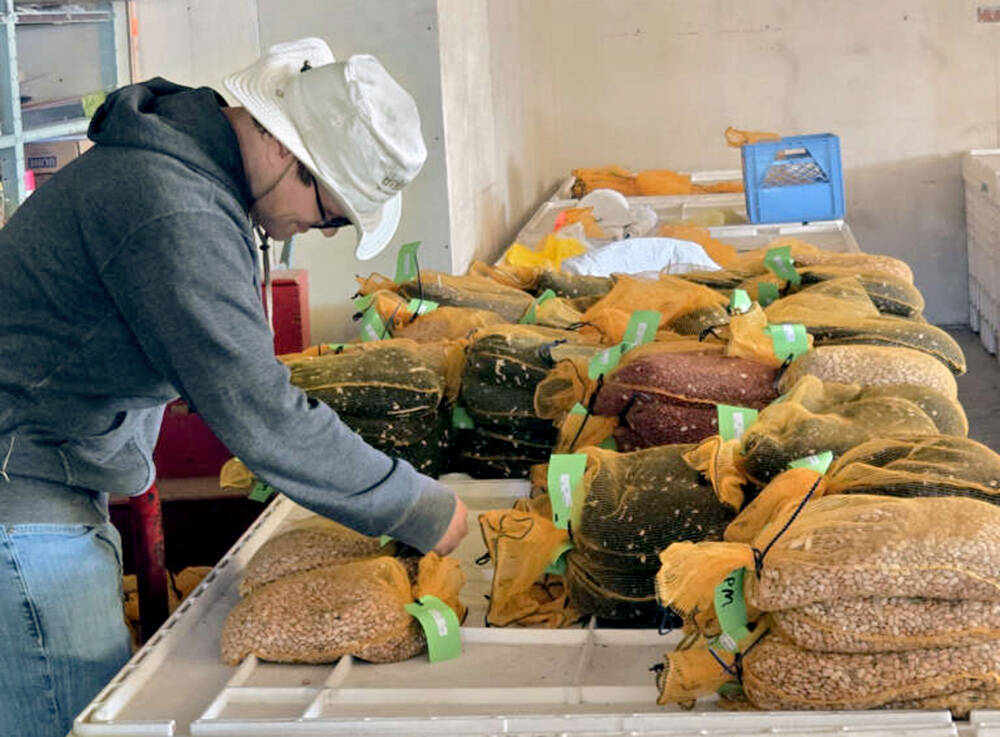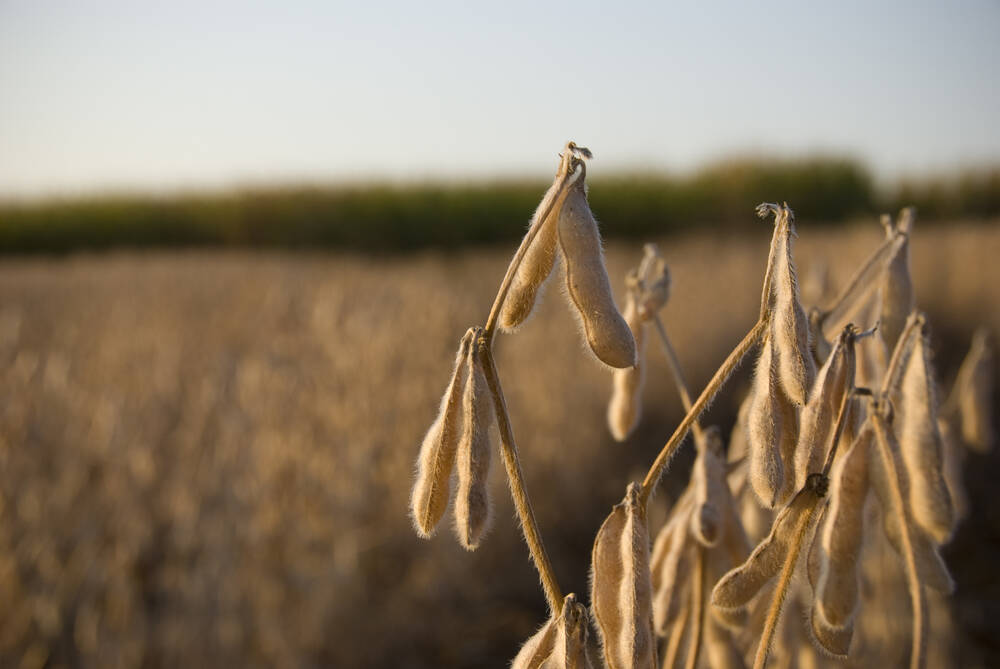As of Oct.14, the Ontario corn harvest was about 25 per cent complete while the soybean harvest was 40 per cent complete. The Ontario corn and soybean markets are making seasonal lows as farmer selling increases and basis levels deteriorate.
Quick look:
Soybeans: December is the prime time for selling soybeans.
Read Also

Bean research breeds community giving
University of Guelph dry bean researcher Dr. Mohsen Yoosefzadeh Najafabadi champions sustainability by donating surplus breeding program beans to support food security and community art initiatives.
Corn: Both the Canadian and U.S. corn crops will be above the five-year average.
Wheat: Milling wheat stocks are tight globally.
The 14-day weather forecast looks favourable for harvest progress. In this issue, we’re advising farmers to increase milling wheat sales to 30 per cent because wheat markets make seasonal highs prior to the Southern Hemisphere wheat harvest.
Soybeans
The Ontario soybean market is trading at 52-week lows as harvest nears the half-way mark. Yield reports confirm a crop size of 4.3 million tonnes, up from four million tonnes last year and up from the five-year average of 3.9 million tonnes. Domestic crushers have covered their nearby requirements and commercial stocks are building. Export terminal bids are premium to local crushers due to stronger export demand.
From Sept. 1 through Dec. 31, Ontario farmers will deliver an estimated 3.2 million tonnes into the commercial system. Total domestic demand is estimated at 630,000 tonnes, while export demand is estimated 2.3 million tonnes for a total of 3.03 million tonnes. Basis levels are expected to strengthen later in December as commercial stocks decrease.
From Jan. 1 through March 31, farmers will deliver an estimated 550,000 tonnes into the system while domestic and export demand is estimated at 750,000 tonnes. The domestic Ontario market needs to trade at a premium to world values during the winter to curb exports and attract about 150,000 tonnes of imports from the U.S.
The soybean futures are also in the process of making seasonal lows. We believe the U.S. soybean harvest was at about 60 per cent complete as of Oct. 13. The U.S. crop was estimated at 124.7 million tonnes on the October World Agricultural Supply and Demand Estimates report, up from 113.8 million tonnes last year.
U.S. farmers will deliver 75 per cent or 93 million tonnes into the commercial pipeline from Sept. 1 through Dec. 1. This next point is very important. U.S. farmer selling slows in December and January but the main Brazilian harvest only starts in February and moves into high gear in March. The Argentine harvest begins in March and continues through April.
December is a prime opportunity for Ontario farmers to sell soybeans because U.S. farmer selling slows and the South American harvest hasn’t started. Ontario basis levels are strengthening during December, while the soybean futures are making seasonal highs.
In many years, the soybean futures market incorporates a risk premium as the South American crops move through the critical pod filling stage. Keep in mind that a year-over-year increase of three million tonnes is expected for Argentine soybean production while Brazilian output is expected to be up 16 million tonnes from last year.
What to do: We’ve advised farmers to be 20 per cent sold on their 2024 production. We’re planning our next sale in late November or early December as stocks in the Ontario commercial pipeline decrease and the soybean futures market makes seasonal highs.
Corn
Early yield reports confirm Statistics Canada’s production estimate of 9.6 million tonnes, down from the 2023 crop size of 10 million tonnes but up from the five-year average of 9.2 million tonnes. From Sept. 1 through Dec. 31, Ontario farmers will sell 6.5 million tonnes of corn into the commercial pipeline, while domestic and export demand is only about 3.4 million tonnes. Basis levels are coming under pressure as harvest progresses.
We estimate the U.S. corn harvest was 41 per cent complete as of Oct. 13. The USDA continues to project a crop size around 386 million tonnes. This is down from last year’s crop of 390 million tonnes but up from the five-year average of 386 million tonnes.
U.S. farmers will sell about 50 per cent of the crop into the commercial pipeline from Sept. 1 through Dec. 1. U.S. domestic and export demand makes seasonal highs in December.
There are four main factors that will cause the Ontario corn market to strengthen later in the crop year. Compared to last year, corn production is down 6.2 million tonnes in Ukraine and down 3.5 million tonnes in Russia. There is a lower exportable surplus in Russia and Ukraine due to the year-over-year decline in production.
Secondly, Brazil and Argentina have been contending with drier conditions. Brazilian farmers are in the early stages of planting the first corn crop, which is about 18 per cent of total production. The second crop is planted after the soybean harvest in February.
Argentine farmers have just started in the central region. Total Argentinean corn acreage is expected to be down 15-20 per cent from last year.
Thirdly, European corn production is expected to finish near 57 million tonnes, down from the five-year average of 65 million tonnes. This will enhance demand for Ontario corn in the latter half of the crop year.
Finally, we’re expecting the USDA to lower its 2024/25 corn carryout later in the crop year. Energy prices are expected to percolate higher, enhancing ethanol margins and production. U.S. domestic feed usage will be higher than last year as cattle are fed to heavier weights. We have a higher U.S. export demand projection compared to the USDA.
The market needs to encourage acreage in spring 2025 and cannot afford a crop problem. If there are drier conditions in the U.S. next spring, the corn market will get hot.
What to do: We’ve advised Ontario farmers to be 30 per cent sold on their 2024 corn production. Our next sale will occur in late November or early December. We’re looking for the corn market to percolate higher after the U.S. corn harvest is completed.
Wheat
Russia is the world’s largest wheat exporter and sets the price structure on the world market. Russian wheat production is expected to finish in the range of 81-83 million tonnes (mmt), down from last year’s output of 92 mmt. Russian wheat exports are forecasted to reach 45-48 mmt, down from the 2023/24 exports of 56 mmt.
Russian wheat prices surged from US$221/tonne f.o.b. the Black Sea to $232/tonne f.o.b. the week of Oct. 7. Traders fear escalating tensions in the Black Sea and the potential for wheat export limits from Russia and Ukraine. Russian and Ukrainian farmers have also been contending with drier conditions while planting winter wheat.
We’re expecting Black Sea prices to continue the upward trend later in winter as the exportable surplus decreases. The Russian spring wheat harvest was plagued with rain, downgrading the quality, so the exportable surplus of milling quality is actually down 20 mmt from year-ago levels.
Keep in mind the EU is also struggling with lower supplies of milling quality wheat due to ongoing rains during harvest. The world is rather tight on milling wheat stocks.
Australia experienced drier conditions over the past month and there have been reports of frost damage in certain regions. Traders have trimmed their Australian production estimates from earlier forecasts. Argentina is also contending with drier conditions and production will be down from earlier projections. The main point is that fundamentals for major exporters are getting tighter, not loosening.
In Canada and the U.S., domestic millers are well covered for nearby requirements through December, so the market is based on export demand. World values tend to peak just before the main Australian and Argentinean harvests, which occur in December. Farmers in Ontario need to sell in late October or early November.
What to do: We’ve advised Ontario producers with feed wheat quality to be 50 per cent sold on their 2024 production. Plan to sell the remaining feed quality in spring. Producers with milling quality should be 10 per cent sold. This week, we’re advising farmers to increase milling sales to 30 per cent of total production.












